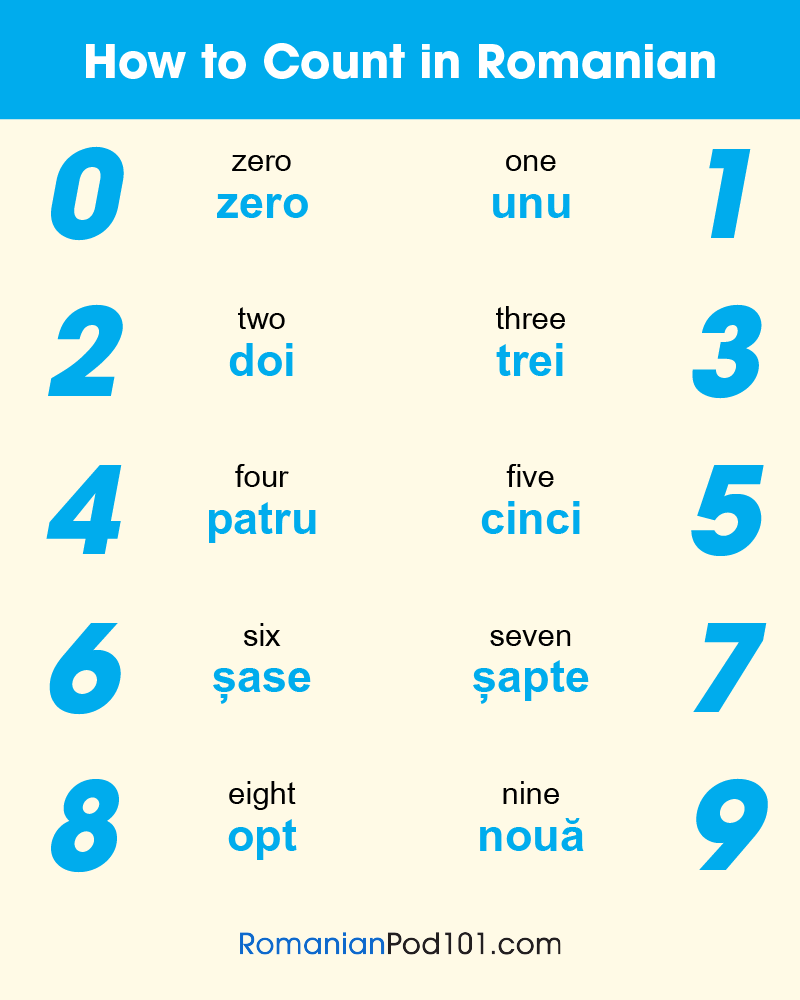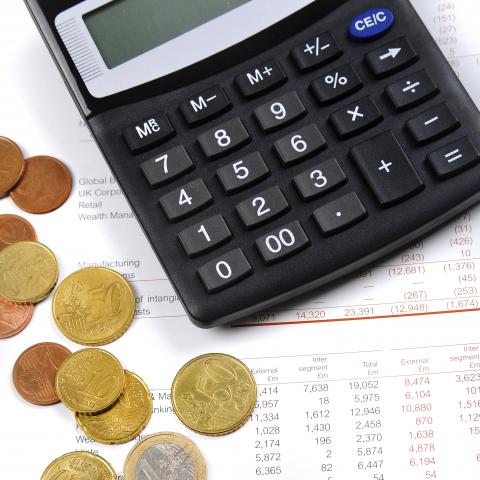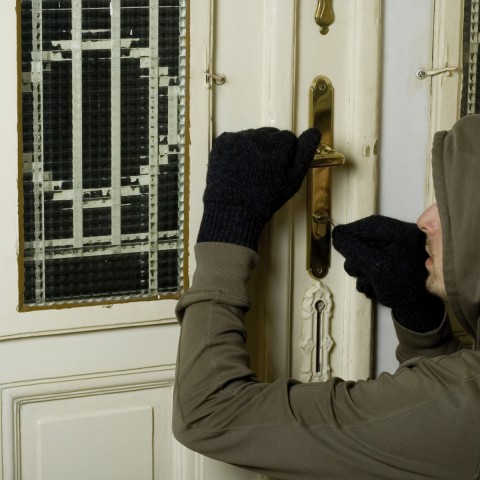It’s a numbers game out there.
No matter what you say in Romanian, sooner or later you’re going to run into a handful of Romanian numbers. Phone numbers, prices, ages… How are you going to react?
Are you going to freeze up and sheepishly say the number in English with a Romanian accent? (I’ve seen it happen!)
Or are you going to smoothly and serenely rattle off a tongue twister like șapte sute douăzeci și cinci (seven-hundred and twenty-five)?
It sounds beautiful—and in this article, we’ll break down how these numbers are formed and how you can use them correctly every single time.
Table of Contents
- How Romanian Got its Numbers
- The Cardinal Numbers
- The Ordinal Numbers
- Phone Numbers
- Conclusion: How RomanianPod101 Can Help You Master Romanian

1. How Romanian Got its Numbers
Language enthusiasts know that Romanian is not the “purest” of the Romance languages. Quite a few words in everyday life have been borrowed from Slavic or other neighboring languages of the area. Numbers, though—numbers are Latin through and through.
Even substantial sound changes like decem → zece and quattuor → patru fit right into the models of how we know languages evolve. And by the way, all these numbers are related to the English numerals as well, since they all end up coming from Proto-Indo-European, spoken more than 3,000 years ago!
2. The Cardinal Numbers
| English | Romanian |
|---|---|
| Zero | zero |
| One | unu |
| Two | doi |
| Three | trei |
| Four | patru |
| Five | cinci |
| Six | șase |
| Seven | șapte |
| Eight | opt |
| Nine | nouă |
| Ten | zece |
One of the most obvious features of Romanian when comparing it to other languages is its noun gender. Romanian nouns have one of three genders: masculine, feminine, and neuter. Neuter nouns are interesting because they act masculine in the singular form, and feminine in the plural.
For our purposes in this article, we’ll just mention that unu and doi are the masculine forms of those numbers. The feminine forms are una and două, respectively. And above two, you don’t need to worry about that sort of declension!
When it comes to talking about zero, things work exactly like in English. We say “one degree” and “zero degrees,” and in Romanian, the plural is obligatory as well: un grad, zero grade.
Let’s move on to eleven through nineteen. If you’ve learned other European languages before, get ready for a little surprise…
| English | Formal Romanian | Informal Romanian |
|---|---|---|
| Eleven | unsprezece | unșpe |
| Twelve | doisprezece | doișpe |
| Thirteen | treisprezece | treișpe |
| Fourteen | paisprezece | paișpe |
| Fifteen | cincisprezece | cinșpe |
| Sixteen | șaisprezece | șaișpe |
| Seventeen | șaptesprezece | șapteșpe |
| Eighteen | optsprezece | optișpe |
| Nineteen | nouăsprezece | nouășpe |
They’re all regular! None of this eleven, twelve nonsense that exists in all the other European languages. Each of these comes from the base number, the word spre meaning “toward” (it used to mean “over,” which makes more sense), and zece meaning “ten.”
And what’s the deal with that third column? Well, you may have already noticed that sprezece is a bit of a mouthful. So in colloquial speech, you’ll very often just hear that ending as șpe. You wouldn’t want to write it in anything formal, and you might get made fun of by stuck-up grammarians, but in reality, everybody uses these short forms.
Take another look at that word for “eighteen.” That’s actually the word in Romanian with the most consonants all in one row: ptspr. Because of that inconvenience, you’ll often hear the variant optisprezece, which makes things easier by adding a vowel. Again, that’s not considered correct enough to write down.
After nineteen, things keep getting easier. We take the root number and stick on zeci, the plural of zece.
So “twenty” is douăzeci, made from două + zeci. “Forty” is patru + zeci on the same principle. The only strangeness is “sixty,” which doesn’t follow the pattern exactly. The regular form șasezeci is nowhere to be found, and instead șaizeci is what comes up.
For a construction like “twenty-five,” the phrasing is literally “twenty and five”: douăzeci și cinci. Nothing to it!
These words also have a simplified pronunciation: the whole zeci bit contracts to ș or zeș, so that “fifty-one” comes out to cincizeci și unu → cinzeșunu.
Also, when we count things after twenty, we add the word de meaning “of.” So we literally have “twenty of something” instead of “twenty somethings.” Observe:
- Ali Baba Şi Cei Patruzeci De Hoţi
Ali Baba and The Forty Thieves (Ali Baba and The Forty of Thieves)
Once we get above ninety-nine, the sky’s the limit. Just like in English, we simply say each part of the number: so 365 is trei sute șaizeci și cinci, or literally “three hundreds sixty and five.”
And yes, I said “hundreds.” “Hundred” is sută, and the plural is sute, which is obligatory.
There’s one last thing to be appreciative of: In other Romance languages, the word for 1000 is something like mil, which is confusing for an English speaker, who thinks “million.” In Romanian, 1000 is simply mie, which is far enough away that there’s no reason to get confused!
3. The Ordinal Numbers
So we’ve got a good handle on how to count, and how to count things, in Romanian. What about listing things?
That’s where ordinal numbers come in, and they’re a total cinch.
The word for “first” in Romanian is the only irregular one; it’s primul for masculine and prima for feminine. All ordinal numbers have regular masculine and feminine variants, since what you’re actually saying is “the first [something].”
So for a masculine ordinal, you add -lea to the base number word. For a feminine ordinal, you just add -a.
“The third” becomes al treilea / a treia. Pretty cool, right? Unfortunately, it’s not quite as regular as that since there are a couple of vowel deletions and additions. Here’s a chart for you:
| English | Romanian (masculine / feminine) |
|---|---|
| The first | primul / prima |
| The second | al doilea / a doua |
| The third | al treilea / a treia |
| The fourth | al patrulea / a patra |
| The fifth | al cincilea / a cincea |
| The sixth | al șaselea / a șasea |
| The seventh | al șaptelea / a șaptea |
| The eighth | al optulea / a opta |
| The ninth | al nouălea / a noua |
| The tenth | al zecelea / a zecea |
Have a look at that last one. Anything ending in -zece is going to follow the same pattern as zece itself. So all the numbers from eleven to nineteen (and 111 – 119, 211 – 219, etc) have the same endings.
- al doisprezecelea / a douăsprezecea
The twelfth (masculine / feminine)
Once we get to twenty, a new pattern emerges. As we already know, multiples of ten end in -zeci. This will regularly turn to -zecilea (masculine) and -zecea (feminine).
So we’d eventually get to al treizecilea / a treizecea meaning “the thirtieth” and al cincizecilea / a cincizecea meaning “the fiftieth.”
Further, when we’re not counting even multiples of ten, we only modify the very last digit of the number. Just like in English, we don’t say “the fortiethfifth.” We say “the forty-fifth,” which in Romanian is al patruzeci și cincilea / a patruzeci și cincea.
With this information, you should be able to count pretty much anything. Even if you can’t remember the last time you mentioned “the seventy-seventh” of something, you now know the rules behind forming them!
There’s one last thing to consider: reversed forms.
When we talk about floors in a building, we switch the order like so:
- etajul al cincilea
the fifth floor (literally the floor the fifth)
The same switcheroo happens for certain historical figures:
- Carol al Doilea
Carol The Second
It happens in a few more places, but these are the most common, by far. When you go to a museum and the exhibit for Carol the First is on the sixth floor, you’ll know how to describe it.
4. Phone Numbers
Let’s take a few moments to look at one of the most common uses of numbers in daily Romanian life: the telephone. Romania’s country code is +40, read as plus patru zero.
For a long time, international calls could not be made out of Romania unless you were in government. In the 1990s, things started opening up, but there was still a complicated system for phone numbers, where some counties got longer and shorter numbers depending on their population.
Now, though, everyone’s number is nine digits long, plus a mandatory zero at the beginning. Don’t forget it! To ask for someone’s number, simply say:
- Îmi puteți da numărul de telefon?
Can you give me your phone number?
5. Conclusion: How RomanianPod101 Can Help You Master Romanian
Learning to say numbers fluently in a foreign language sometimes feels like a thankless task. After all, when was the last time you thought a foreign speaker of your language did a particularly good job with numbers?
That ability just slips right by undetected.
But the good news is that, for a language with regular numbers like Romanian, you don’t need to spend a ton of time on it. Once you learn the base numbers and the rules for forming the other numbers, all you need is just a little bit of deliberate practice.
And then before you know it, you’ll be a numbers whiz in any language you want.
What did you think about counting and numbers in Romanian? Are there some you’re still struggling with? Let us know in the comments!
Author: Yassir Sahnoun is a HubSpot certified content strategist, copywriter and polyglot who works with language learning companies. He helps companies attract sales using content strategy, copywriting, blogging, email marketing & more.




















